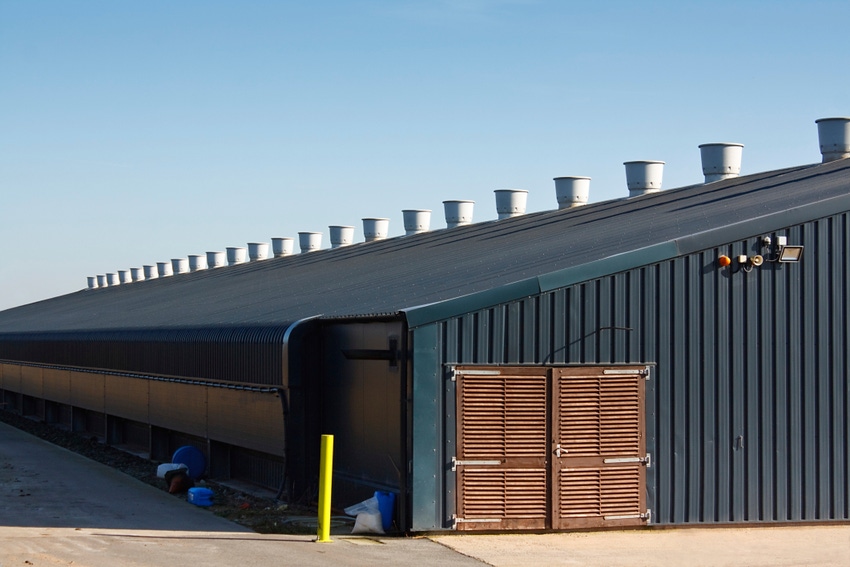Higher revenues linked to poultry manure application in continuous corn production suggest it may be more economical to transport manure over greater distances from poultry facilities to cropland.
October 24, 2019

For the past 20 years, Iowa State University researchers have been studying the long-term effects of applying poultry manure on cropland compared to utilizing a commercial fertilizer.
The study, primarily funded by the Iowa Egg Council, looked at soil quality, crop yield, production costs and water quality in conventional Iowa cropping systems.
“The data show that, when properly managed, poultry manure is a great source of nutrients to enhance crop production and can also benefit soil and water quality,” said Michelle L. Soupir, associate professor of agricultural and biosystems engineering, who joined the research team in 2009.
“This is the first and only study of its kind that we are aware of,” Iowa Egg Council executive director Kevin Stiles said. “I give our board a lot of credit for having the vision to fund this long-term effort to objectively evaluate the potential advantages and impacts of poultry manure for the cropping systems we use in Iowa and the Midwest.”
The research began in 1998 with 11 plots on Iowa State’s Agricultural Engineering & Agronomy Research Farm near Boone, Iowa. In its first decade, experiments compared three treatments in a corn/soybean rotation, the announcement said. A commercial urea ammonium nitrogen (UAN) fertilizer was applied at the recommended rate of 150 lb. per acre, and manure was applied at two rates: one that reflected the commercial fertilizer rate and the other, for comparison, at double the recommended rate.
In the research’s second decade, the focus was on comparing treatments on continuous corn. Manure and UAN were applied at the recommended rate of 200 lb. of nitrogen per acre for continuous corn, along with a half application rate for comparison, Iowa State said.
After 20 years, the study found that particulate organic matter and several other measures of soil quality were significantly better in the manured plots. Particulate organic matter helps stabilize soil particles, which can improve soil’s resistance to erosion and water-holding capacity.
According to the announcement, corn yields increased 25% during the continuous corn studies when poultry manure was applied at the same rate as UAN. During the corn/soybean phase of the study, average corn and soybean yields were similar when poultry manure was applied at the same rate as UAN.
Though manure costs were generally higher, the manure was still more profitable during the continuous corn phase, when considering the total production cost per bushel of output, the researchers said. The higher revenues linked to the manure treatments in the continuous corn system suggest that it may be more economical to transport manure over greater distances from poultry facilities to farms, they added.
“This could result in more manure availability for growers seeking fertilizer and also mean a larger potential market for poultry producers selling manure,” Ji Yeow Law, a research associate who analyzed crop yields and economics for the study, said.
He noted that economic results will vary depending on fertilizer prices, manure price and availability. Manure value also will vary due to different nutrient levels. The researchers found wide variation in manure nutrient levels, leading them to emphasize the need for regular manure testing.
“The economic benefits of poultry manure are likely to be lost if landowners also apply UAN as ‘insurance,’ adding nitrogen fertilizer that’s not needed,” Soupir said. “This also applies to the positive water quality benefits we found.
“The research shows a number of important benefits from using poultry manure,” Soupir said. “It also confirms the importance of using good conservation and nutrient management practices to avoid phosphorus buildup when manure is applied at the nitrogen rates.”
The results are detailed in the article “Long-term Impact of Poultry Manure on Crop Yield, Soil & Water Quality & Crop Revenue” in the December 2019 issue of the peer-reviewed Journal of Environmental Management, available online now.
Stiles said the Iowa Egg Council intends to support continuing the research and expects to recruit additional partners. Future plans, which are already underway, include shifting the application timing from the spring to the fall and studying microbial water quality in drainage from the poultry manure applications.
Other support for the research has been provided by Sparboe Farms; Farm Nutrients of Rembrandt, Iowa; Iowa State’s Agriculture Experiment Station; Iowa State’s Agricultural & Biosystems Engineering Water Quality Research Lab, and Iowa State’s Leopold Center for Sustainable Agriculture.
Source: Iowa State University, which is solely responsible for the information provided and is wholly owned by the source. Informa Business Media and all its subsidiaries are not responsible for any of the content contained in this information asset.
You May Also Like


.png?width=300&auto=webp&quality=80&disable=upscale)
